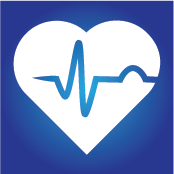 | 0 comments
| 0 comments
Sonya Kung
Edited by Ana-Maria Oproescu
This is a summary of a research study conducted by Drs. Andrei Krassioukov and Janice Eng at ICORD. To read the original article, please click here.
Why is cardiovascular disease prevalent among individuals with SCI?
Cardiovascular disease is more prevalent within the SCI community than in the general population. The reason for this is the extensive bed rest following traumatic spinal cord injury, which results in a low level of physical activity and cardiovascular fitness. However, physical training in individuals with spinal cord injuries has the potential to improve their cardiovascular health and to reduce the medical complications associated with being physically inactive. These potential benefits underscore the importance of participating in an exercise program after SCI.
The objective of this observational study was to determine if vigorous exercise could help individuals recovering from a recent SCI reach their full potential during physical therapy. The researchers measured the amount of cardiovascular stress experienced by individuals with SCI during recovery. Researchers looked at how much activity was spent at 40% heart rate reserve which is considered moderate activity and the minimum level to improve cardiovascular fitness.
How was data collected for this observational study?
Participants were recruited as part of a larger study examining spinal cord injury admissions to inpatient care at two rehabilitation centres. Data for the present study were collected over two weekdays near the end of a patient’s rehabilitation stay. It was expected that at this point in time participants would be near their peak of inpatient recovery and would be able to maximally participate in rehabilitation activities. Participants took part in their regular physical therapy activities. Heart rate was then recorded and their level of physical activity was collected by self-reported spinal cord injury questionnaire.
What did researchers discover?
Researchers found that the time spent at a heart rate within a physical therapy (≥40% heart rate reserve) was low and did not exceed a median of 5 minutes. Only 13% of individuals undertook any activity that exceeded 20 minutes of moderate activity. This indicates that individuals in recovery are spending very little time at an intensity that could improve cardiovascular fitness, despite it being known that these individuals have low endurance. Thus, participants may not be obtaining the sufficient amount cardiovascular training effect needed to enhance their neurological, cardiovascular or musculo-skeletal health.
What do these results mean?
Their findings on heart rate indicate that individuals with SCI spend a short amount of time during physical therapy sessions at the moderate to vigorous intensities. This indicates the lost opportunity to maximize rehabilitation. In the future, we should explore strategies to incorporate more physical activities with a cardiovascular component to maximize recovery.
*heart rate reserve: This is the difference between resting heart rate and maximum heart rate.

